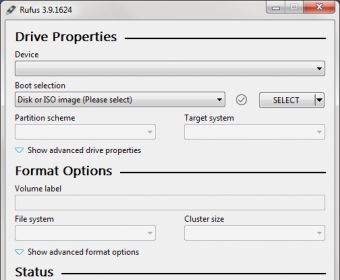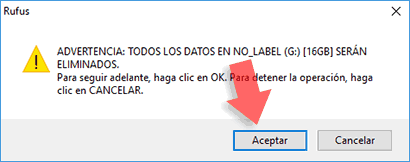
- Rufus usb tool tutorial espanol how to#
- Rufus usb tool tutorial espanol install#
- Rufus usb tool tutorial espanol 64 Bit#
- Rufus usb tool tutorial espanol windows 10#
- Rufus usb tool tutorial espanol Pc#
It has an easy-to-use interface, so you don’t need to worry if it is your first time using it. Neither technical skills are required if you are using Rufus for the first time. You need a bootable USB drive to perform all of these tasks.
Rufus usb tool tutorial espanol Pc#
USB-HDD) as the first boot device.Note: rufus.ie is the official website of Rufus, a free and open-source When need a bootable USB?īootable USB drives are required when you want to work on a blank system without an OS installed, want to reboot a system with another OS, or format your PC or laptop. At “ Boot Order” setting, set the USB disk (e.g.(This setting is commonly found in the" Advanced BIOS Features" menu). In BIOS menu, find the " Boot Order" setting.In Sony Vaio laptops that support UEFI, you have to press the “ASSIST” key on your laptop, while your laptop is Powered-OFF). If your computer supports UEFI, press the the corresponding button according to your computer’s manufacturer instructions. * Note: The way to enter into BIOS Settings depends on the computer manufacturer. Power On your computer and press " DEL" or " F1" or " F2" or " F10" to enter BIOS (CMOS) setup utility.– In order to boot from the USB disk, you must set the USB as first boot device from your BIOS settings.To do that:
Rufus usb tool tutorial espanol windows 10#
When Rufus operation is completed, close Rufus utility, unplug the USB stick and use it to troubleshoot Windows 10 or to perform a clean OS installation. ( Wait until Rufus utility erases your USB stick and transfers Windows 10 ISO files )ĩ. Read carefully the warning message and press “ OK”.
Rufus usb tool tutorial espanol 64 Bit#

At Cluster size, leave the default 16 kilobytes (default).At Target system, select UEFI (non CSM).If your computer supports UEFI, then apply the following settings in RUFUS (see Screenshot 1): Now, proceed as follows according your case:Ĭase A. Select the Windows 10 ISO file from your computer (e.g. Choose the empty USB stick that you plugged in your computer.Ħ. Now double-click to run “ rufus” application.ģ. Remove all USB storage drives from your computer and plug an EMPTY* USB stick (minimum 8GB) to an empty USB port.Īttention: DO NOT leave your files on the USB stick, because all files will be erased during this operation.Ģ.

Burn Windows 10 ISO to USB with RUFUS utility.ġ. Go to the official Rufus download page and download the latest version of RUFUS USB Bootable Creator Utility on your computer.
Rufus usb tool tutorial espanol install#
The next step is to download the Rufus USB creator utility, which is an excellent tool to create a Windows bootable USB flash drive, to install or to repair Windows.ġ. Step 2: Download RUFUS USB Boot Creator Utility*.
Rufus usb tool tutorial espanol how to#

To do that, follow the instructions from one of these tutorials: Download Windows 10 in a ISO file.įirst of all, proceed and download a legally copy of Windows 10 in a ISO file. How to Create a Bootable Windows 10 USB Flash Drive using RUFUS utility. An EMPTY USB Disk with at least 8GB storage space. The Windows 10 USB installation media can be used to install Windows 10 from USB, or to repair a damaged Windows 10 installation.ģ. In this tutorial you can find step by step instructions on how to create a Windows 10 USB installation media, from a Windows 10 ISO image file, by using the RUFUS USB creator utility.


 0 kommentar(er)
0 kommentar(er)
